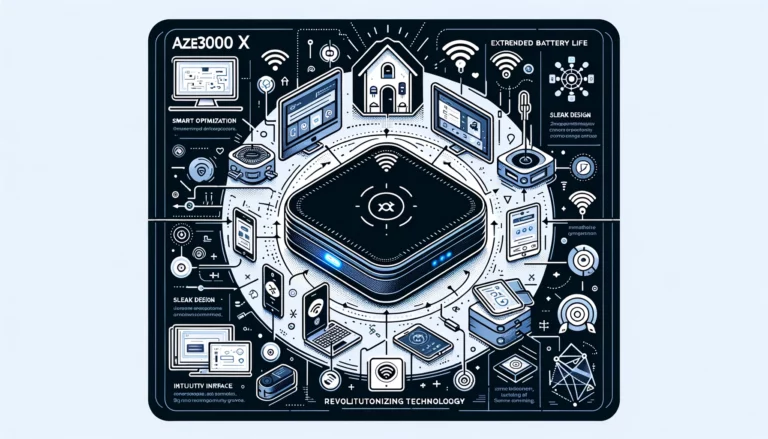Understanding the Importance of Network Access Control in Modern Enterprises
Network access control, or NAC, enables organizations to safeguard their proprietary network by requiring users and devices to authenticate before accessing company data. It also offers other valuable capabilities, such as total network visibility, instant user profiling, and guest networking management.
Common use cases include:
- Remote working and bring-your-own-device policies.
- Securing data from IoT or OT devices that may not have antivirus software.
- Ensuring compliance with regulations like HIPAA.
Automating NAC processes makes a big difference in handling these issues.
Restricting Access to the Network
Network access control (NAC) helps limit the number of devices and users connected to a private network. It does this by allowing access only to those devices and users that follow security policies set by the network administrator.
This prevents unauthorized devices from getting on the network and introducing malware, ransomware, or other security threats. In addition, NAC solutions can stop people from accessing areas of the network that they should not have access to. For example, visitors may be allowed to connect to the company intranet but only access sensitive customer data if their role authorizes them.
NAC solutions also provide full visibility into networks to identify users and devices with access to them. This allows the network administrator to determine which devices should have access to what kinds of data, resources, and applications. Additionally, network access control solutions can automatically onboard corporate and BYOD devices into the network based on pre-established rules. This reduces IT and Help Desk workloads by automating many onboarding processes. It can also block or quarantine non-compliant devices until they have navigated automated remediation processes.
Identifying Unauthorized Devices
A key function of network access control is identifying unauthorized devices, even when the device is plugged into the corporate network. Given the proliferation of mobile devices like smartphones and tablets and Internet-of-Things (IoT) hardware, this is an essential capability, including smart sensors that monitor utilities or security systems. With Bring-Your-Own-Device policies and the reliance on remote or hybrid staff, as well as third-party contractors, CISOs need the ability to authenticate, authorize, and categorize devices before they can connect to the organization’s network.
This can be done using pre-admission network access control that evaluates devices as they attempt to gain admission to the network and blocks access if the device doesn’t meet policy conditions. Another method is to use post-admission network access control, which checks devices once inside the firewall to ensure they’re not attempting to move laterally across the organization’s network.
Both types of network access control work in conjunction with other security solutions to reduce the risk of cyber threats, such as threat intelligence services that can provide insights into new and emerging security vulnerabilities.
Enforcing Policies
With so many devices in and around an enterprise network, security teams must maintain visibility into all of them. However, the attack surface is growing exponentially, with remote and in-office work arrangements becoming the norm and the proliferation of Internet of Things (IoT) devices and software-as-a-service apps. This makes it imperative that enterprises implement zero-trust access solutions with network access control capabilities.
With NAC tools, security teams can evaluate incoming endpoint systems and users for compliance and policy adherence. They can also grant and revoke permission based on those criteria on a device or user basis. For example, a policy could require guests to log in with a unique username and password before being allowed into the network. This would help protect the network from malicious actors likely stealing credentials.
NAC solutions can provide granular device and user control to prevent cyberattacks, including those that exploit weaknesses in existing network infrastructure or protocols. It can also restrict lateral movement within the network to limit the damage of a breach.
Enforcing Compliance
Enforcing compliance with an increasingly vast attack surface — from third-party users and BYOD devices to IoT sensors that collect and relay sensitive data and software-as-a-service applications that run on edge devices — is challenging. Network access control helps address the problem by enforcing security policies on endpoints.
The first network access control type is pre-admission and happens before a user or device can enter the corporate network. Pre-admission network access control evaluates the device or user for compliance with corporate security policies and only allows entry if there is a valid security policy.
Post-admission network access control occurs inside the corporate network, limiting lateral movement by restricting access privileges as users and devices move from one enterprise area to another. It also limits the ability for attackers to spread throughout the organization, requiring them to constantly re-authenticate and verify their identity as they traverse the network.
When selecting a network access control solution, focus on vendors targeting enterprises of your size and complexity and those that understand your industry vertical. For example, the access requirements in a digitalized healthcare environment will differ greatly from those in a connected factory. In addition, look for solutions that provide native integrations with your unified endpoint management and zero-trust security capabilities to enhance visibility across the entire enterprise.







